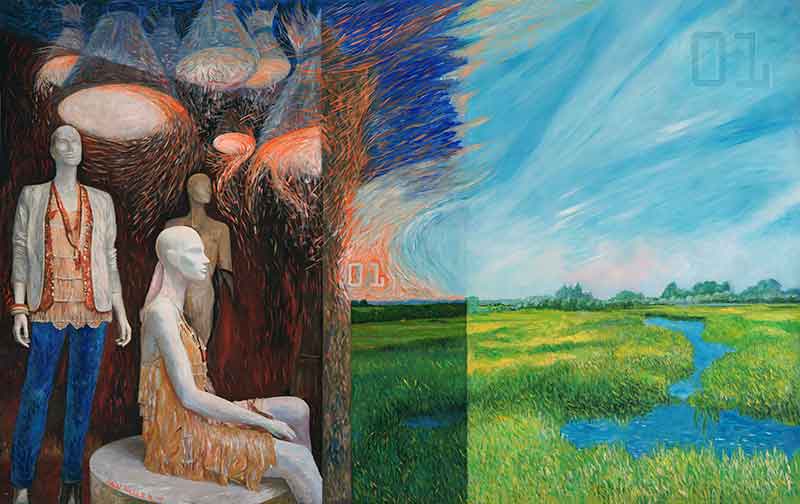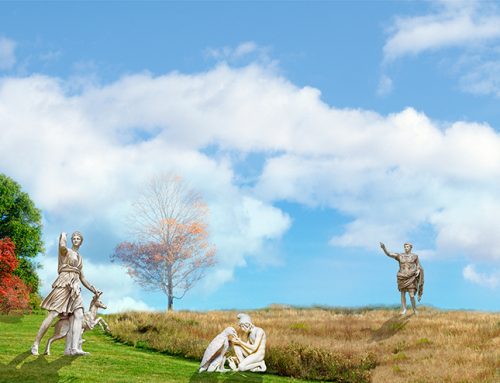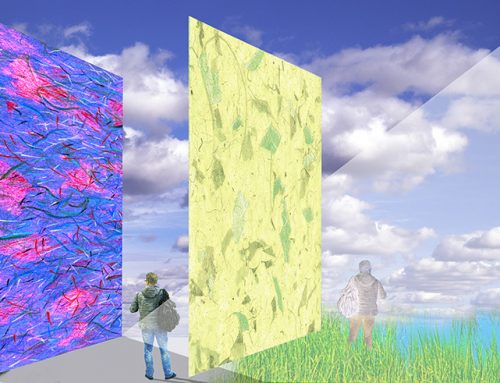Creation
There are infinite ways to create art. This article concentrates on one particular process that involves three distinct separate disciplines. Original “oil painting” “Photography” and “Digital art”. These are all part of the creative process that I describe below. What is Good outstanding art? For sure a matter of wide interpretation. For me, it usually requires integrating visuals to come up with an idea which is later to become the artwork, created in the medium of my choice. To read about creation techniques used by others, the article titled “Techniques for Creating a Painting” is a good start.
Process
For me personally, creating “Good Art” means among other things, producing a piece that presents the viewer with a strong subject matter, pleasing visual experience resulting from an outstanding excellent technical execution (the craft) and a thought-provoking message. When these three components combine they present something worth looking at and exploring. Something to think about. Perhaps, something to learn from. It is the ultimate goal of an artist (I hope), to create worthy art, that will achieve “masterpiece” status.
As mentioned above, the tools I employ in my creative workflow are painting, photography and digital painting (a.k.a illustration). I select each, based on the final desired result. Sometimes use only one and at other times all three.
Subject selection
I have been thinking for a while now, about the “Post Modern” era. The “Information Age” the computer age, and all technological advances taking place as we speak. Prior to our “Post Modern” era (in the arts) there was a “Modern era” and before that the “Industrial Age”. Compared to the “Post Modern” era, in previous cycles of our history people have been pretty much “in the dark”. Although inventions innovations and scientific discovery do not belong solely to the Post Modern era.
When it comes to the future I am optimistic. And I wanted to express and further communicate this thought by creating art, in this case, an oil painting. Two motifs emerged. The past eras when people were sort of “in the dark”, and the new Post-Modern era, the age of information, computers and communications, which I want to believe will bring us indeed a bright future. This is how I defined the subject of the painting titled “The Future is Bright” was born.
Asset collection
A quick look through my photographic archive helps me find the images required to visually compose, and describe the subject. Because of the nature of this painting, it was clear that composition had to have the final effect of two contrasting areas “The past” and “The future”.
Digital composition
At this point I combined images in Photoshop, visually firming up the base idea. The assembly of digital images combines to create a “sketch” allowing me to assess if the parts work well together. As the famed photographer Henri Cartier-Bresson once said: “For me, the camera is a sketch book, an instrument of intuition and spontaneity.” My physical “sketchbook” is the computer monitor onto which I project my thoughts.
On the left, I placed a group of mannequins sitting in the dark. They represent the past. They sit in the dark and they lack our present time knowledge. There is a transition period leading to a bright future. In some of my works, I have used numbers as symbols. The 0,1 symbols of a “New Language” the computer binary code. The computers will aid the human minds to invent, innovate and excel, bestowing upon us a bright future. Read more on the process under the Digital article on this BLOG.
Painting the digital sketch
During this phase, the digital sketch idea got implemented in oil on canvas, about 50% of the final desired look.
Photographing
About midway through the oil painting process, a digital image (photograph) of the half-finished painting is captured. This image is then brought back into the computer for further manipulation of graphics and color enhancements.
Digital painting
Several quick computer digital sketches were created in Photoshop to further develop the subject and add additional elements. During this phase, I “visually debate” and refine the subject and generally, the concept. Usually, more visual elements get added or subtracted and more ideas come to mind, sometimes resulting in a complete change to the base image as well as the subject. Read the other article about the digital art painting process HERE.
The final painting
After achieving a visually pleasing effect, the new image is printed and the final painting further developed and finalized. A new original oil on canvas painting depicting a bright future for our world has been created. Describing the style, the painting is a surrealistic figurative painting.
Suggested reading
All art related posts on the artgreeT Blog






